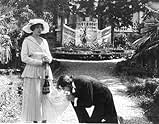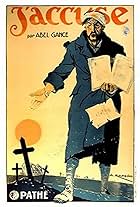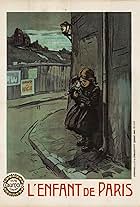Umirayushchiy lebed
- 1917
- 49m
IMDb RATING
7.1/10
1.1K
YOUR RATING
A grief-stricken ballerina becomes the obsession of an increasingly unhinged artist.A grief-stricken ballerina becomes the obsession of an increasingly unhinged artist.A grief-stricken ballerina becomes the obsession of an increasingly unhinged artist.
Photos
- Director
- Writer
- All cast & crew
- Production, box office & more at IMDbPro
Storyline
Featured review
Early ballet films followed the pattern of the Romantic-era ballet craze of its popular staged librettos where the dancers, almost supernatural in their movements, would invariably die at the end of the show wrapped in tragedy. The earliest existing ballet movie inspired by this century-old tradition is Russia's 1917 "The Dying Swan."
The mute heroine, played by Vera Karalli, is spurned by an admirer and seriously takes up ballet. Performing the original 1905 Anna Pavlova-dance, "The Dying Swan," in public, Karalli is spotted by an artist who is fixated by the illusion of death. He's sees something in her face that speaks of despair and ending it all. He convinces her to model for him with that look of gloom. But the earlier admirer returns to the scene, sparking a newfound energy in Karalli's face. This is when the movie's macabreness takes a twisted turn.
"The Dying Swan" was directed by Yevgeni Bauer, who had been called "the first true artist in the history of cinema." (See 1913's "Twilight of a Woman's Soul." ) Producing over 80 movies, he broke his leg on the set while directing his next film, "On Happiness." The later movie suffers because of his injury, as well as his last movie, "The King of Paris," when he was forced to direct in a bathchair while soaking his leg. While he was overseeing "Paris," Bauer came down with pneumonia. He was rushed to a Yalta hospital and died there June, 1917 at 52 years old. An actress in the movie stepped in to finish directing. His departure occurred just before Russia's transformation to Marxism in October roiled its movie industry, turning its independent cinema into a propaganda outlet for the government.
As for Vera Karalli, she played in several Bauer films and cited "The Dying Swan" as one of her best performances. A mistress to the Grand Duke Dmitri Pavlovich of Russia, first cousin to Tsar Nicholas II, she was at the palace of a co-conspirator with her lover the night the Tsarina Alexandra's confidant, Grigori Rasputin, was killed in December 1916. She fled Russia soon after the October Revolution and settled in Austria, living a long life teaching ballet.
The mute heroine, played by Vera Karalli, is spurned by an admirer and seriously takes up ballet. Performing the original 1905 Anna Pavlova-dance, "The Dying Swan," in public, Karalli is spotted by an artist who is fixated by the illusion of death. He's sees something in her face that speaks of despair and ending it all. He convinces her to model for him with that look of gloom. But the earlier admirer returns to the scene, sparking a newfound energy in Karalli's face. This is when the movie's macabreness takes a twisted turn.
"The Dying Swan" was directed by Yevgeni Bauer, who had been called "the first true artist in the history of cinema." (See 1913's "Twilight of a Woman's Soul." ) Producing over 80 movies, he broke his leg on the set while directing his next film, "On Happiness." The later movie suffers because of his injury, as well as his last movie, "The King of Paris," when he was forced to direct in a bathchair while soaking his leg. While he was overseeing "Paris," Bauer came down with pneumonia. He was rushed to a Yalta hospital and died there June, 1917 at 52 years old. An actress in the movie stepped in to finish directing. His departure occurred just before Russia's transformation to Marxism in October roiled its movie industry, turning its independent cinema into a propaganda outlet for the government.
As for Vera Karalli, she played in several Bauer films and cited "The Dying Swan" as one of her best performances. A mistress to the Grand Duke Dmitri Pavlovich of Russia, first cousin to Tsar Nicholas II, she was at the palace of a co-conspirator with her lover the night the Tsarina Alexandra's confidant, Grigori Rasputin, was killed in December 1916. She fled Russia soon after the October Revolution and settled in Austria, living a long life teaching ballet.
- springfieldrental
- Jul 18, 2021
- Permalink
Details
- Release date
- Country of origin
- Languages
- Also known as
- Labud na samrti
- Production company
- See more company credits at IMDbPro
- Runtime49 minutes
- Color
- Sound mix
Contribute to this page
Suggest an edit or add missing content
















